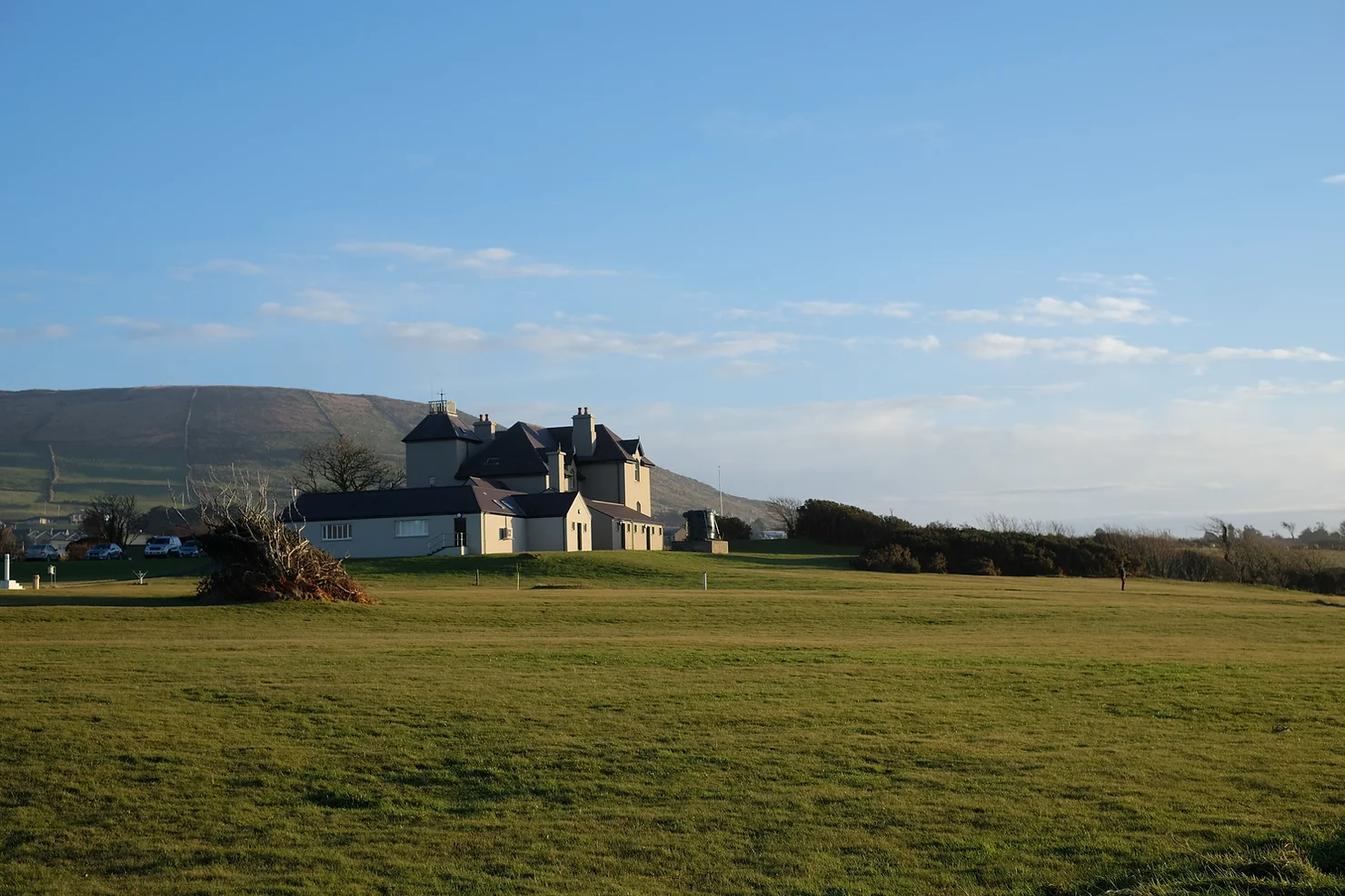Decoding the science of plankton
- Jane Sheehan

- Nov 7, 2022
- 6 min read
Updated: Nov 8, 2022
Earlier in the series we talked about how the name “Maude Delap” is synonymous with jellyfish research and pioneer marine biology. Not only was she the first person in the western world to successfully culture jellyfish, but she was also the first person to properly observe their complex life cycles and publish on it. Her work contributed significantly to our understanding of jellyfish behaviour, ecology, and biology. Because of this outstanding contribution, her work on plankton is not as frequently mentioned.
Though often plankton are too tiny for us to see in the water, they are a fundamental part of our marine environment. They are essential components of the marine food web and many marine animals rely on plankton for food – such as juvenile fish, small crustaceans, some sharks and whales and even other plankton themselves! The marine ecosystem would collapse without plankton, and therefore it is essential to study plankton so that we can monitor the health of the ocean. They are indicators for changes which are happening within our environment.

Plankton viewed from a microscope (Britannica)
When monitoring how plankton changes over time, it is important for scientists to create a long-term time series within an area. This can help researchers observe changes in plankton numbers throughout the years. Unfortunately, getting consistent datasets over a long period of time can prove a challenge. Therefore, Maude Delap’s extensive collection of records and observations are incredibly important to marine science in Ireland. From her work, we can observe information on plankton communities from over 100 years ago!
Delap’s work on plankton dates back in 1895, when a team of three scientists from University College London came to Valentia Island to carry out a marine biological study. They had chosen to study Valentia due to the island’s westerly location and suitability for their study - and as they had heard of a certain Delap family who were avid naturalists. They arrived in April of that year, making use of an empty house close to the shore which they converted into a laboratory.
Due to the success of the 1985 study, six scientists returned to conduct another, bringing with them their own trawler funded by the Royal Society. They began setting up their laboratory this time within the Fishermen’s Halls in Knightstown. Of the six scientists, Edward T. Browne took charge of tow-netting the harbour for plankton species. By this point, Maude Delap already had great interest in the marine species of the harbour and began to assist Browne in his studies. Her sister Constance also proved invaluable to the research. After the research team’s departure in 1896, Delap continued the tow-nettings. She sent the material, preserved in formalin, back to Browne for examination. On top of this task, she also recorded the temperature of the sea and kept general notes on any changes in the species that she observed.

The Delap sisters carrying out research on the shore (Courtesy of the National Science & Engineering Plaques Committee)
She began compiling her own records of plankton in 1899 up until 1923.These records would go on to be published in three separate journals: within Sea and Inland Fisheries Scientific Investigations and Irish Naturalist. Maude and Constance would row around the harbour towing a net for collecting plankton. She would bring these specimens back to her home-made laboratory called “The Department”. They would then have sieved the net full of plankton with seawater into a jar, leaving them with a soup like mixture of water, debris, and plankton.
At this time, it is not clear if she used to preserve these samples using preservatives such as formalin or studied them alive. Working with both dead and live plankton samples can each have their own difficulties. Live plankton zoom in and out of frame of the microscope lens, making it difficult to focus on them as they dart all over the frame. Preserved plankton often loses its colour and sometimes its shape, making it difficult to observe the small details which make some species identifiable. It would be time consuming alone just separating the plankton themselves from the plant material and sand.

Figure 3: Plankton net being thrown off a boat.
Regardless of her methods, it’s safe to say that Maude would have spent hours looking down her golden microscope, observing the plankton samples she caught. It’s worth mentioning that identifying plankton is a very difficult task. Often the details which make plankton identifiable are very small and difficult to differentiate. Even in today’s age of technology and high-quality microscopes, plankton work can be incredibly time-consuming. It’s astounding to think that Maude was carrying out such precise work with such simple and few resources. The quality of detail in the sketches available in Maude’s sketchbooks show that she had an extremely keen eye.

Maude Delap’s microscope which can be viewed at Valentia Heritage Centre
(Credit Dr. Nessa Cronin)
Throughout her study, she identified up to 64 species of plankton of many varying types including young forms of lobsters, starfish and sea snails. However, most ofthe species recorded are “gelatinous zooplankton”. These are the smaller jellyfish species or jellyfish-like species. She wrote to Browne often, who helped her with her identification of these species. It is possible that some of these species were incorrectly identified, or have since been re-classified, but all in all, it is an incredible feat for a self-taught planktonologist. It is also a lovely insight into the incredible biodiversity of the waters surrounding Iveragh.
Some individuals were large enough that she was able to collect them by hand or by using bell jars. Sometimes she would do land-based watches for blooms or shoals of plankton, as at times the abundance of species, such as the By-the wind sailor (Velella velella), would choke up her plankton-net, making it difficult for her to carry out tows. In total, between the years 1899 and 1923, Maude had dated records of plankton for 284 days in total. Maude notes that after 1910, her observations were irregular. It’s astounding to think that even in 1923, at the age of 57, she was still devoting her time to recording the changes of animals in the harbour.

Marine biologist Jane Sheehan hauling up a plankton net
Even if she did not mention the exact date that she saw a certain animal, she still often mentioned how their numbers changed throughout the months. In the wintertime of many of these years, she notes how it was impossible to tow-net on the choppy water, but still included some observations that she was able to make. This is incredibly important as knowing how these numbers change over a yearly basis allows scientists to understand how species abundance changes with the seasons. Seasonality is vital in today’s study of biodiversity, as it is possible that climate change and human-based activities are influencing how species change throughout the year and this has the potential to upset many of nature’s delicate balances.
Maude Delap’s work on plankton provides an insight into how plankton communities functioned 100 years ago and deserves to be highlighted. From these observations, we can compare and contrast how plankton communities and abundance has changed over time. They are baseline datasets which can be used for future studies into Valentia harbour. Likewise, the sheer amount of time and dedication that Maude put into collecting these records needs to be acknowledged. For 24 years she dedicated her time to making these observations. It would have taken a significant amount of time and effort to regularly tow-net the harbour. Similarly, she must have spent hours at a time at her microscope, identifying the different species of plankton and making her detailed sketches. Her devotion and contribution to plankton research is worth commemorating and celebrating within our community.
Our Knowledge Gatherer Jane Sheehan is currently carrying out her own plankton survey of the Iveragh peninsula. Twice a month, samples are collected from a rib from a site west of Deenish Island. Here, Jane collects plankton using a modern plankton net. A collaboration has been set up with the Valentia Meteorological Observatory in – allowing Jane to use the lab space at the MET Office to analyse her samples. With a microscope and specialized camera, Jane hopes to be able to compare data that she collects with the observations taken by Maude Delap so that we can see how the plankton community differs with that of a100 years ago. With the ability to capture pictures of the species of plankton she collects, we can see the very species Maude herself was collecting and compare them to some of the sketches she took during her own plankton surveys.















Comments